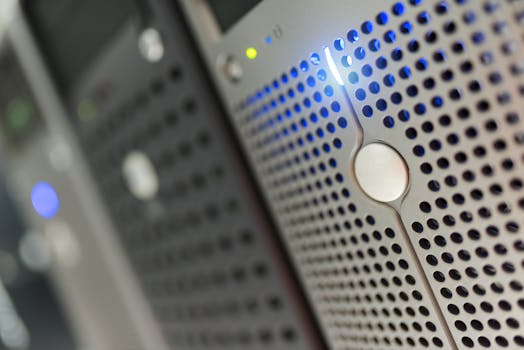
A recent AWS outage brought down a significant portion of the internet, impacting countless services and users worldwide. This event highlights the centralized nature of the cloud and raises important questions about redundancy and resilience. Let's delve into what happened, why it matters, and what lessons we can learn.
AWS Outage: When the Cloud Falls, Does the Internet Fall With It?
A recent widespread outage on Amazon Web Services (AWS) left many users staring at error messages and brought down a significant portion of the internet. From streaming services to online games and even essential business applications, the impact was felt globally. While outages are inevitable in the complex world of technology, the scale and scope of this event underscore a critical dependency on centralized cloud infrastructure. This article explores the details of the outage, its implications, and the crucial lessons we can learn about building more resilient systems.
What Happened? A Deep Dive into the AWS Outage
The specific details of the outage are often complex and technical, but the general picture is crucial. The outage typically stemmed from issues within a specific AWS region, affecting services that relied on infrastructure in that zone. While AWS has multiple regions designed to provide redundancy, the interconnected nature of many applications meant that failures in one region cascaded into others.
Understanding the Root Cause (When Available)
Official explanations from AWS usually point to a combination of factors, including software bugs, configuration errors, or even unexpected traffic surges. Pinpointing the exact root cause can take time, as AWS engineers meticulously analyze logs and system metrics. However, the overarching theme is often related to the inherent complexity of managing a massive, distributed system.
The Ripple Effect: Services Affected
The impact of the outage was widespread, affecting a diverse range of services. Examples include:
- Streaming Services: Popular platforms like Netflix and Disney+ experienced disruptions, leaving users unable to stream their favorite shows and movies.
- Online Gaming: Many online games relying on AWS for server infrastructure suffered connectivity issues, frustrating players worldwide.
- E-commerce: Online retailers saw a dip in sales as their websites and payment processing systems experienced outages.
- Business Applications: Critical business applications, such as CRM systems and communication platforms, were also affected, impacting productivity and operations.
The Centralization Dilemma: Why One Outage Matters So Much
The AWS outage highlights a growing concern: the increasing centralization of the internet's infrastructure. While cloud services offer undeniable benefits in terms of scalability, cost-effectiveness, and ease of management, they also create a single point of failure.
The Benefits and Risks of Centralized Cloud Infrastructure
Benefits:
- Scalability: Cloud services can easily scale resources up or down to meet changing demands.
- Cost-Effectiveness: Cloud providers offer pay-as-you-go pricing models, reducing capital expenditure on hardware.
- Ease of Management: Cloud providers handle much of the infrastructure management, freeing up internal IT teams.
Risks:
- Single Point of Failure: Outages in a single cloud region can have widespread consequences.
- Vendor Lock-in: Migrating away from a cloud provider can be complex and costly.
- Security Concerns: Centralized data storage raises concerns about data breaches and security vulnerabilities.
The Importance of Redundancy and Disaster Recovery
To mitigate the risks of centralized cloud infrastructure, organizations must prioritize redundancy and disaster recovery planning. This includes:
- Multi-Region Deployment: Distributing applications and data across multiple AWS regions to ensure business continuity in the event of an outage.
- Backup and Recovery Strategies: Implementing robust backup and recovery strategies to quickly restore data and services in case of a failure.
- Automated Failover: Automating the failover process to minimize downtime and ensure seamless transitions between regions.
Lessons Learned: Building More Resilient Systems
The AWS outage serves as a valuable learning opportunity for organizations of all sizes. It underscores the importance of proactive planning, robust architecture, and continuous monitoring.
Practical Tips for Building Resilient Applications
- Embrace Microservices: Breaking down applications into smaller, independent microservices can limit the impact of individual failures.
- Implement Circuit Breakers: Using circuit breakers to prevent cascading failures by isolating failing components.
- Monitor System Health: Continuously monitoring system health and performance to detect and address potential issues proactively.
- Regularly Test Disaster Recovery Plans: Conducting regular disaster recovery drills to ensure that plans are effective and up-to-date.
- Diversify Cloud Providers (Multi-Cloud Strategy): Consider using multiple cloud providers to reduce reliance on a single vendor. However, this introduces complexity and overhead.
- Content Delivery Networks (CDNs): Utilize CDNs to cache static content closer to users, reducing latency and improving performance, even during outages.
The Future of Cloud Computing: Decentralization and Edge Computing
Looking ahead, the future of cloud computing may involve a shift towards decentralization and edge computing. These approaches aim to distribute computing resources closer to users and reduce reliance on centralized data centers.
- Decentralized Cloud: A decentralized cloud architecture distributes computing resources across multiple providers and locations, reducing the risk of a single point of failure.
- Edge Computing: Edge computing brings computing resources closer to the edge of the network, enabling faster response times and reduced latency for applications such as IoT and autonomous vehicles.
Conclusion: Navigating the Cloud's Complexities
The recent AWS outage serves as a stark reminder of the inherent complexities and potential vulnerabilities of centralized cloud infrastructure. While cloud services offer numerous benefits, organizations must carefully consider the risks and implement appropriate measures to ensure resilience, redundancy, and business continuity. By embracing best practices, diversifying resources, and exploring emerging technologies like decentralization and edge computing, we can build more robust and reliable systems that are less susceptible to the impact of future outages. The cloud is a powerful tool, but it requires careful planning and execution to harness its full potential without compromising stability.
